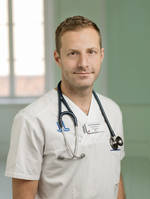11 Jun Bystander CPR Saves Lives – Mobile App May Help Save More
 MedicalResearch.com Interview with:
MedicalResearch.com Interview with:
Jacob Hollenberg M.D., Ph.D.
Assistant Professor, Cardiologist
Head of Research, Centre for Resuscitation Science
Karolinska Institutet, Stockholm, Sweden
Editor’s note: Dr. Hollenberg and colleagues published two articles in the NEJM this week discussing CPR performed by bystanders in out-of-hospital cardiac arrests.
MedicalResearch: What is the background for the first study?
Dr. Hollenberg: There are 10,000 cases of cardiac arrest annually in Sweden. Cardiopulmonary Resuscitation (CPR) has been taught to almost a third of Sweden’s population of 9.7 million. In recent years the value of bystander CPR has been debated, largely due to a lack of a randomized trial demonstrating that bystander CPR is lifesaving.
In this study, which included all cases of emergency medical services (EMS) treated and bystander-witnessed out-of-hospital cardiac arrests recorded in the Swedish Cardiac Arrest Registry from January 1, 1990, through December 31, 2011, our primary aim was to assess whether CPR initiated before the arrival of EMS was associated with an increase in the 30-day survival rate.
MedicalResearch: What were the main findings?
Dr. Hollenberg: Early CPR prior to arrival of an ambulance more than doubled the chance of survival. (30-day survival rate was 10.5% among patients who underwent CPR before EMS arrival, as compared with 4.0% among those who did not (P<0.001).)
This association held up in all subgroups regardless of sex, age, cause of cardiac arrest, place of arrest, EKG findings or time period (year analyzed).
MedicalResearch: How did the patients who survived cardiac arrest do from a disability standpoint?
Dr. Hollenberg: We had cerebral performance scores from 474 patients who survived for 30 days after cardiac arrest. (higher scores indicate greater disability).
At the time of discharge from the hospital, 81% of these patients had a score of category of 1. Less than 2% had category scores of 4 or 5.
MedicalResearch: What should patients and providers take away from this report?
Dr. Hollenberg:
- For patients with an out-of-hospital cardiac arrest, CPR performed by bystanders before the arrival of emergency medical personnel, saves lives. This has been validated by both the size of this study and the consistency of the results over three decades.
- CPR education needs to continue and to increase. In Sweden about one-third of the population has been taught CPR. Legislation has recently been passed that mandates CPR be taught to all teenagers in school which should allow an entire generation to become familiar with this lifesaving technique.
- The willingness of the public to become involved also needs to increase. We need new ways of educating lay people to recognize cardiac arrest and to motivate them to perform it. The knowledge that bystander CPR saves lives may enhance that motivation.
MedicalResearch: Greater public involvement in CPR overlaps with your second NEJM study that discusses a mobile phone application. What is the background for this study?
Dr. Hollenberg: Knowing that bystander CPR saves lives, we were looking for new ways to reach patients in the first critical minutes after a cardiac arrest. Training as much of the public as possible is important but still leaves the availability of a trained bystander to serendipity.
We evaluated a totally new system using mobile positioning technology that recruited CPR-trained volunteers we called “short-message-service lifesavers”. Lay volunteers were recruited and trained in CPR.
During the study, EMS dispatchers who suspected that a patient had a cardiac arrest activated the mobile-phone positioning system (as well as ambulance, fire and police vehicles). All such volunteers within a radius of 500 meters from the patient received a computer-generated telephone call and a text message with information on the patient’s location. Patients were randomly assigned in a 1:1 ratio to one of two study groups: in one group, lay volunteers received a text notification; in the control group, no notification was sent.
The primary outcome was the rate of bystander-initiated CPR before the arrival of an ambulance or first responders: 61.6% of the patients in the intervention group (188 of 305 patients) received bystander-initiated CPR, as compared with 47.8% of the patients in the control group (172 of 360 patients).
In addition, we know that out-of-hospital cardiac arrests that occur in the home are associated with worse outcomes. In this study, lay trained volunteers were able to start CPR in the patient’s home.
We are not suggesting lay volunteers supplant an EMS system but rather as a valuable add-on in the first critical 2-4 minutes after a cardiac arrest.
MedicalResearch: What further developments and research are you planning as a result of this work?
Dr. Hollenberg: In the next few days we intend to launch a new service, based on GPS technology, to allow volunteers to fetch the nearest available public AED (automated external defibrillator). This mobile app, available for iPhone and Android, will match the location of all available AEDS with available volunteers. We think this is a very valuable way to get the critical defibrillator to point of need.
Citation:
Early Cardiopulmonary Resuscitation in Out-of-Hospital Cardiac Arrest
N Engl J Med 2015; 372:2307-2315
June 11, 2015
Mobile-Phone Dispatch of Laypersons for CPR in Out-of-Hospital Cardiac Arrest
N Engl J Med 2015; 372:2316-2325
June 11, 2015
[wysija_form id=”3″]
Last Updated on June 11, 2015 by Marie Benz MD FAAD
